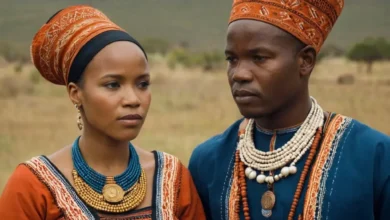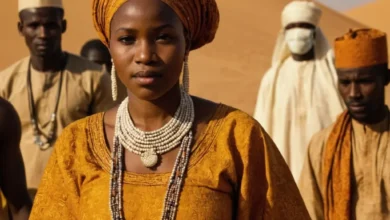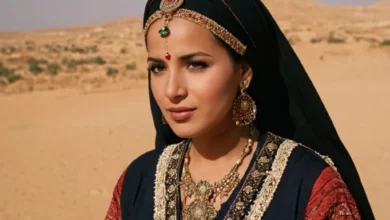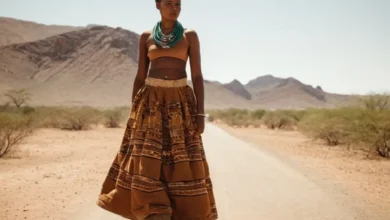Ivorian Traditional Clothing
The Republic of Côte d’Ivoire, often simply called Ivory Coast, is a vibrant West African nation boasting a rich tapestry of cultures, traditions, and artistry. This diversity is beautifully reflected in the country’s traditional clothing, a captivating blend of distinct ethnic styles and influences.
From the vibrant colors and intricate patterns of the Baule to the elegant silhouettes and ornate adornments of the Senufo, Ivorian clothing offers a window into the country’s fascinating heritage.
Ivorian traditional attire is not merely a garment but a powerful symbol of identity, social status, and cultural expression. It embodies the values, beliefs, and aesthetics of each ethnic group, providing a visual representation of their unique history and way of life.
A Kaleidoscope of Ethnic Styles
Côte d’Ivoire is home to over 60 distinct ethnic groups, each with its own unique traditions and artistic expressions. This diversity is reflected in the wide range of clothing styles found across the country. Let’s explore some of the most prominent and visually captivating examples:
See also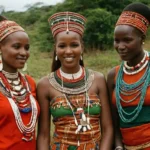 Kenyan Traditional Clothing: A Celebration of Tribal and Cultural Diversity
Kenyan Traditional Clothing: A Celebration of Tribal and Cultural Diversity
The Baule: Mastery of Textiles and Symbolism
The Baule people are renowned for their exceptional textile craftsmanship and intricate patterns. Their clothing is characterized by:
- Vibrant Colors: Baule fabrics often feature bold and contrasting colors like red, orange, yellow, and blue, creating visually stunning ensembles.
- Geometric Patterns: The Baule weave intricate geometric designs into their fabrics, symbolizing various aspects of their culture and beliefs. These patterns often depict animals, plants, and ancestral spirits, reflecting the importance of nature and the spirit world in Baule culture.
- Elaborate Headwraps: Women adorn their heads with colorful and intricately woven headwraps, often showcasing elaborate designs and symbolic meanings.
- Masculine Garments: Baule men traditionally wear loose-fitting shirts or tunics called pagnes, often paired with colorful trousers or wraps.
- Accessories: Beaded necklaces, bracelets, and anklets are commonly worn, adding a touch of elegance and personal expression to their attire.
The Senufo: Elegance and Symbolism in Every Thread
The Senufo people, known for their skilled weaving and dyeing techniques, create clothing that is both visually striking and deeply symbolic.
- Striking Silhouettes: Senufo clothing is characterized by its elegant and often flowing silhouettes, emphasizing movement and grace. Women frequently wear long, flowing gowns with intricate embroidery and embellishments, while men often opt for loose-fitting shirts and trousers.
- Deeply Symbolic Patterns: The patterns woven into Senufo fabrics are rich in symbolism, representing social structures, clan affiliation, and ancestral lineage. Geometric patterns like spirals and zigzags are common, representing the cyclical nature of life and the interconnectedness of the universe.
- Ornate Adornments: Senufo clothing is often embellished with intricate beadwork, embroidery, and metal accents, adding a touch of opulence and sophistication.
- Masks and Headdresses: Masks and elaborate headdresses play a significant role in Senufo rituals and ceremonies. These ornate creations are often incorporated into traditional attire, showcasing the community’s artistic prowess and deep connection to the spirit world.
The Dan: Simplicity and Functionality
The Dan people, known for their agricultural expertise and strong sense of community, prioritize practicality and functionality in their clothing. Their attire is characterized by:
- Simple Designs: Dan clothing is often made from natural fibers like cotton and indigo, with simple and minimalist designs. This reflects their emphasis on simplicity and practicality in everyday life.
- Earth Tones: Dan fabrics typically feature earthy tones like brown, beige, and black, blending seamlessly with their natural surroundings.
- Functional Garments: Dan garments are designed for movement and ease of use, allowing for a wide range of activities from farming to dancing.
- Minimalist Adornments: While jewelry and adornments are not as elaborate as other ethnic groups, the Dan often use simple beaded necklaces and bracelets as personal adornment and status symbols.
The Akan: Bold Colors and Rich Tradition
The Akan people, who share cultural similarities with the Ashanti people of Ghana, boast a rich artistic tradition that is reflected in their vibrant clothing.
See also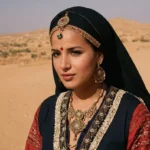 Libyan Traditional Clothing: Adapting to Desert Climate and Cultural Traditions
Libyan Traditional Clothing: Adapting to Desert Climate and Cultural Traditions
- Kente Cloth: Kente cloth, a woven fabric featuring intricate patterns and bright colors, is a prominent feature of Akan attire. The intricate designs often represent proverbs, stories, and ancestral wisdom, making each piece a unique cultural artifact.
- Traditional Garments: Akan women often wear kaba (a loose-fitting shirt or tunic), kente skirt, and headwrap, while men often wear kente wraps and shirts.
- Gold Ornaments: The Akan people are renowned for their goldsmithing skills, and gold ornaments are often incorporated into their traditional attire. Necklaces, bracelets, earrings, and rings are often intricately crafted and represent status and wealth.
- Ceremonial Attire: Akan clothing is particularly elaborate during ceremonies and festivals, often featuring colorful beadwork, feathers, and other adornments. This reflects the importance of tradition and cultural celebration in Akan society.
The Influence of Colonialism and Modernity
While traditional Ivorian clothing remains a vital part of cultural expression, the country’s history of colonialism and the influence of globalization have also shaped its fashion landscape. Western clothing styles, such as jeans, shirts, and dresses, have become increasingly popular, particularly among younger generations.
However, many Ivorians continue to wear traditional clothing for special occasions, ceremonies, and festivals, preserving their cultural heritage and honoring their ancestors. The fusion of traditional and modern styles has also led to the emergence of contemporary designers who reinterpret traditional elements in new and innovative ways.
A Celebration of Identity and Diversity
Ivorian traditional clothing is a vibrant and multifaceted testament to the country’s diverse cultural heritage. It reflects the unique artistic expressions, beliefs, and values of each ethnic group, showcasing the beauty and richness of Ivorian society.
While the influence of globalization is undeniable, traditional clothing continues to hold a special place in the hearts and minds of many Ivorians, serving as a powerful symbol of identity, pride, and cultural heritage.
FAQs about Ivorian Traditional Clothing
What are the most common materials used for Ivorian traditional clothing?
The materials used for Ivorian traditional clothing vary by ethnic group, but some common materials include:
- Cotton: Cotton is a versatile and widely available material used for a variety of garments.
- Indigo: Indigo dye, a natural dye obtained from plants, is commonly used to create vibrant blue hues in fabrics.
- Silk: Silk, a luxurious fabric, is sometimes used for special occasions and ceremonial attire.
- Leather: Leather is used for certain garments and accessories, particularly among some ethnic groups.
- Beads: Beads, made from various materials like glass, wood, and bone, are used for adornment and ornamentation.
How is traditional Ivorian clothing used in everyday life?
Traditional Ivorian clothing is worn for a variety of occasions, including:
- Special Ceremonies and Festivals: Traditional clothing is often worn for weddings, funerals, religious ceremonies, and cultural festivals, showcasing the community’s rich heritage and shared traditions.
- Everyday Wear: In rural communities, traditional garments are often worn for everyday activities like farming, trading, and social gatherings, reflecting the close connection between clothing and daily life.
- Formal Occasions: Traditional clothing is also worn for formal occasions, such as meetings, conferences, and government events, showcasing national pride and cultural identity.
How can I learn more about Ivorian traditional clothing?
There are various ways to learn more about Ivorian traditional clothing:
- Visit Cultural Centers and Museums: Cultural centers and museums in Côte d’Ivoire often have exhibits showcasing traditional clothing and artifacts, providing insights into the history and significance of different styles.
- Attend Traditional Festivals and Events: Attending traditional festivals and events offers a unique opportunity to witness the beauty and diversity of Ivorian clothing firsthand.
- Read Books and Articles: There are numerous books and articles available that delve into the history, symbolism, and cultural significance of Ivorian traditional clothing.
- Connect with Ivorian Communities: Engaging with Ivorian communities, either online or in person, can provide valuable insights into the cultural significance of traditional clothing and its role in everyday life.
Ivorian traditional clothing is a vibrant and captivating expression of the country’s diverse cultural heritage. From the intricate patterns of the Baule to the elegant silhouettes of the Senufo, each ethnic group contributes to the rich tapestry of clothing styles found across the nation. While the influence of globalization is undeniable, traditional clothing remains a vital symbol of identity, pride, and cultural continuity for many Ivorians.
As we delve deeper into the intricate world of Ivorian traditional attire, we gain a deeper understanding and appreciation for the country’s rich history, artistic expressions, and the enduring power of cultural heritage.
